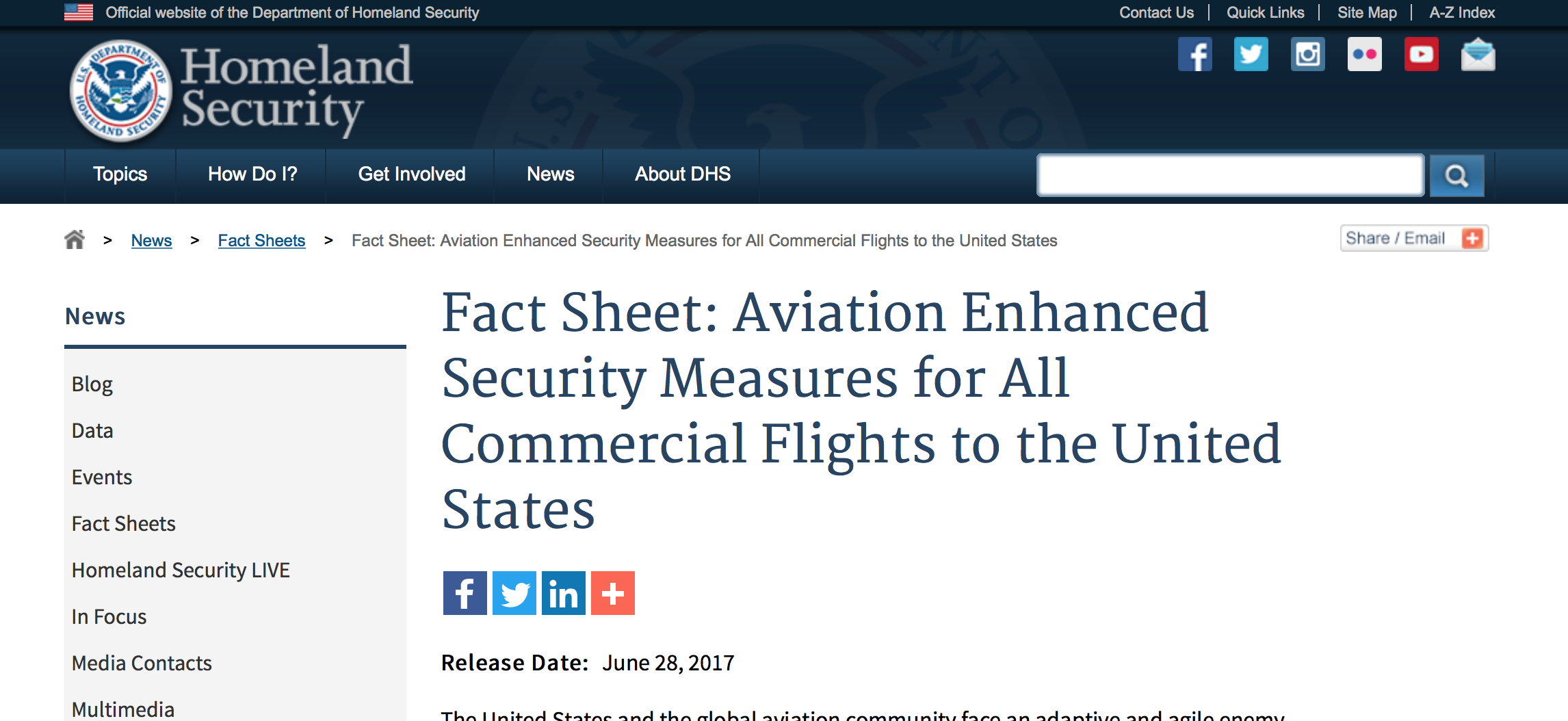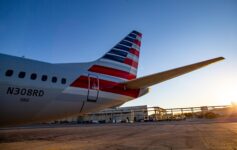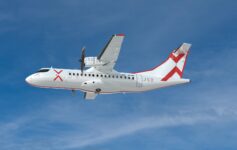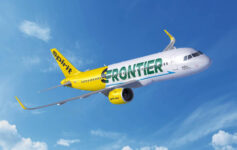The U.S. Department of Homeland Security has announced an “enhanced security directive” on all commercial flights to the USA.
From its Fact Sheet, the following changes will take place, effective immediately (though obviously compliance will take time):
- Enhancing overall passenger screening
- Conducting heightened screening of personal electronic devices
- Increasing security protocols around aircraft and in passenger areas
- Deploying advanced technology, expanding canine screening, and establishing additional preclearance locations.
Ok, but what does that mean?
We don’t know yet.
United Airlines sent the following note to employees this morning–
Today the U.S. Department of Homeland Security (DHS) announced additional security measures for all airlines that operate at international airports with direct flights to the U.S.
These measures include heightened screening of large electronic devices, as well as additional screening of passengers.
Our top priority is the safety of our customers and employees, and we will continue to work with DHS to comply with the new security directive.
I think it is safe to assume that iPads, laptops, and other larger electronic devices will now need to be turned on and inspected, as briefly was necessary during periods of heightened security in years past.
But as to the full extent of these changes…we’ll have to wait and see.
I am encouraged to hear that more preclearance facilities around the world are coming. With preclearance, you perform immigration formalities prior to your flight to the USA. When you arrive in the USA, it is like stepping off a domestic flight.
Current Preclearance Facilities
Current preclearance facilities outside the USA include:
- Aruba
- Queen Beatrix International Airport (AUA)
- Bahamas
- Grand Bahama International Airport in Freeport (FPO)
- Lynden Pindling International Airport in Nassau (NAS)
- Bermuda
- Bermuda International Airport (BDA)
- Canada
- Calgary International Airport (YYC)
- Edmonton International Airport (YEG)
- Halifax Stanfield International Airport (YHZ)
- Montréal-Pierre Elliott Trudeau International Airport (YUL)
- Ottawa Macdonald-Cartier International Airport (YOW)
- Toronto Pearson International Airport (YYZ)
- Vancouver International Airport (YVR)
- Winnipeg James Armstrong Richardson International Airport (YWG)
- Ireland
- Dublin Airport (DUB)
- Shannon Airport (SNN)
- United Arab Emirates
- Abu Dhabi International Airport (AUH)
CONCLUSION
Today’s news is vague. While this is a far better alternative than an outright laptop ban, I predict confusion and delays in the days ahead as the new policy is implemented.





This is certainly far preferable to electronics bans. My concern is this – presumably, everybody will need to go through a thorough screening of their laptops and iPads. I assume this means turning the device on, perhaps logging in with a password, etc. Is this going to result in a ludicrous situation where boarding for US-bound flights now begins 90 minutes prior to departure, or something like that? That’s going to require some meaningful changes to MCT. As it is, there’s a lot of US-bound connections via Europe that are sub-2 hours (which I avoid like the plague, but I know some folks prefer).